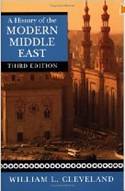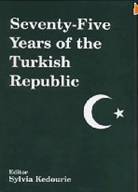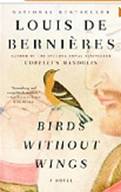ISTANBUL THE MAGICAL CITY
ISTANBUL ONE DAY OPTIONS
OPTION 1
PRIVATE TOUR
Old City
|
OPTION 2
PRIVATE TOUR
Old City |
- Meet our guide at 08:30 am
at the Istanbul Port
- Visit The Byzantine Hippodrome
- The Blue Mosque
- Aya Sophia
- Lunch at a Local Restaurant where home made food is served
- Topkapi Palace
- Grand Bazaar (optional )
The Tour Price
Includes
- Excellent Guide
- Private transportation
- Entrance fees to all the sites and the museums in the itinerary.
- Lunch
- Botteled water in the van
The Tour Price
does not include
- Breakfast
- Dinner
- Drinks with meal
- Tip for the Guide
- Tip for the driver
|
- Meet our guide at 08:30 am
at the Istanbul Port
- Byzantine Cistern *
- Visit The Byzantine Hippodrome
- The Blue Mosque
- Aya Sophia
- Lunch at a Local Restaurant where home made food is served
- Spice market
** (Cistern opens at 09:00 AM, I will strongly recommend you to be there 5 minutes before 09:00 so that you can be the first to go in to feel the ambiance without any body blocking your view at this stunning unique site.)
The Tour Price
Includes
- Excellent Guide
- Private transportation
- Entrance fees to all the sites and the museums in the itinerary.
- Lunch
- Botteled water in the van
The Tour Price
does not include
- Breakfast
-
Dinner
-
Drinks with meal
-
Tip for the Guide
-
Tip for the driver
|
OPTION 3
PRIVATE TOUR
Jewish
Heritage
|
OPTION 4
PRIVATE TOUR
Christian Heritage |
-
Meet with your guide at 08:30 at the Istanbul port
-
Visit Galata jewish Meseum
-
A walk through Balat , the renovated part of the residential old Jewish Istanbul
-
Visit the oldest Synagogue of Istanbul
-
Lunch
-
Visit Neva Shalom synagogue
-
Your choice of one of the monumental edifices of Istanbul
Blue Mosque or Aya Sophia
-
Grand Bazaar
-
Private transportation back to Istanbul port
The Tour Price
Includes
- Excellent Guide
- Private transportation
- Entrance fees to all the sites and the museums in the itinerary.
- Lunch
- Botteled water in the van
The Tour Price
does not include
- Breakfast
- Dinner
- Drinks with meal
- Tip for the Guide
- Tip for the driver
|
- Meet our guide at 08:30 am
at the Istanbul Port
- Byzantine Cistern *
- Aya Sophia
- Bzantine Hippodrome
- Grand Bazaar
- Lunch at a Local Restaurant where home made food is served
- Chora churchse ship
- Return to the crui
(Cistern opens at 09:00 AM, I will strongly recommend you to be there 5 minutes before 09:00 so that you can be the first to go in to feel the ambiance without any body blocking your view at this stunning unique site.)
The Tour Price
Includes
- Excellent Guide
- Private transportation
- Entrance fees to all the sites and the museums in the itinerary.
- Lunch
- Botteled water in the van
The Tour Price
does not include
- Breakfast
- Dinner
Drinks with meal
- Tip for the Guide
- Tip for the driver
|
INFO ON THE SITES:
THE BASILICA CISTERN
 The Basilica Cistern is one of many cisterns in Istanbul built during the Byzantine era to give life to this grand city. Istanbul is built on two big peninsulas on two continents, Asia and Europe. Neither side of the city has any natural source of water. Therefore, the cisterns and the aqueducts were the vital buildings of the city at all ages. In the 5th, 6th Century BC, for the Christians of Constantinople, the pagan temples of the city were nothing more than architectural material for recycling for new constructions. The Basilica cistern, which was built in 532 A.D, is perfect example of this mentality. When you walk down to the Basilica cistern, which is now under one of the busiest streets of Istanbul, you can see the breath taking pillars of former temples creating a mystical ambiance. The Basilica Cistern is one of many cisterns in Istanbul built during the Byzantine era to give life to this grand city. Istanbul is built on two big peninsulas on two continents, Asia and Europe. Neither side of the city has any natural source of water. Therefore, the cisterns and the aqueducts were the vital buildings of the city at all ages. In the 5th, 6th Century BC, for the Christians of Constantinople, the pagan temples of the city were nothing more than architectural material for recycling for new constructions. The Basilica cistern, which was built in 532 A.D, is perfect example of this mentality. When you walk down to the Basilica cistern, which is now under one of the busiest streets of Istanbul, you can see the breath taking pillars of former temples creating a mystical ambiance.
THE BLUE MOSQUE
 The Blue Mosque was completed in 7 years (1609 – 1616) The 24000 blue tiles of this mosque had impressed the Europeans of the 17th Century so much that the mosque is called “ The Blue Mosque’’. The building is a marvel of engineering with its half and quarter domes supporting its huge dome. The architect of the mosque, Mehmet Aga was a poet, musician, and a master of engraving mother of pearl in wood. The mosque reflects his artistic background and his mathematical genius. As in all of the other imperial Mosques, the blue mosque is a complex of many buildings, which were in service of the people. We can still see the market place, the Arasta Bazaar, which was used to finance the monumental mosque, the Turkish Bath , the orphanage and the shelter for those who were then homeless. The Blue Mosque was completed in 7 years (1609 – 1616) The 24000 blue tiles of this mosque had impressed the Europeans of the 17th Century so much that the mosque is called “ The Blue Mosque’’. The building is a marvel of engineering with its half and quarter domes supporting its huge dome. The architect of the mosque, Mehmet Aga was a poet, musician, and a master of engraving mother of pearl in wood. The mosque reflects his artistic background and his mathematical genius. As in all of the other imperial Mosques, the blue mosque is a complex of many buildings, which were in service of the people. We can still see the market place, the Arasta Bazaar, which was used to finance the monumental mosque, the Turkish Bath , the orphanage and the shelter for those who were then homeless.
THE BYZANTINE HIPPODROME
 When Constantinople became the capital of the Roman Empire, The Byzantine, trying to compete with the grandeur of the city of Rome, built this Hippodrome three times larger than the biggest stadium of Rome. The Hippodrome had a sitting capacity of one hundred thousand people. The obelisks lined up in the middle of this building were brought from Egypt and Greece representing the lands, which were under the rule of Constantinople. The hippodrome was used for more than sports activities. The heart of the political life was beating here both during the Roman, the Byzantine and the Ottoman era. When Constantinople became the capital of the Roman Empire, The Byzantine, trying to compete with the grandeur of the city of Rome, built this Hippodrome three times larger than the biggest stadium of Rome. The Hippodrome had a sitting capacity of one hundred thousand people. The obelisks lined up in the middle of this building were brought from Egypt and Greece representing the lands, which were under the rule of Constantinople. The hippodrome was used for more than sports activities. The heart of the political life was beating here both during the Roman, the Byzantine and the Ottoman era.
THE TURKISH ISLAMIC ART MUSEUM (Closed on Mondays)
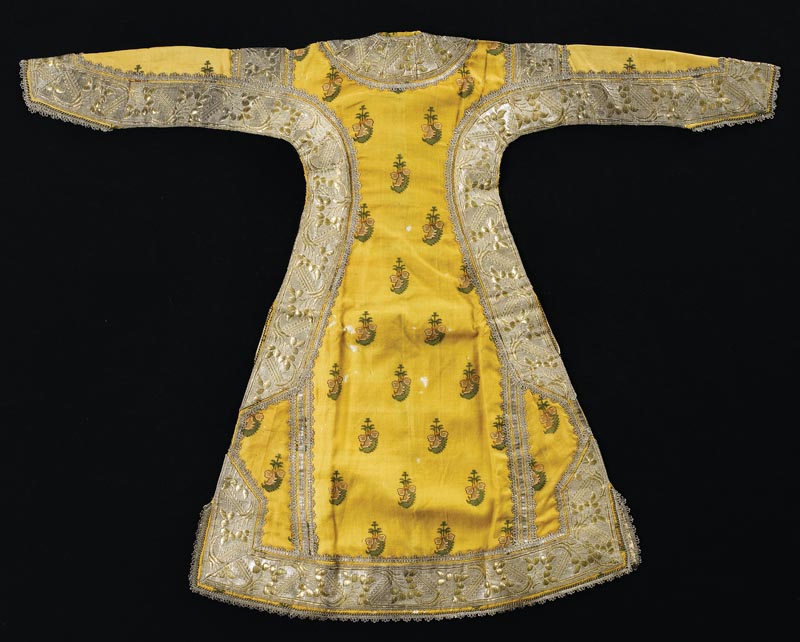 The Turkish Islamic Art Museum is an ideal place where we can have a quiet corner to sit and talk about the long complicated history of Istanbul (Constantinople)This is essential to understand the different layers of history and synthesis of cultures that we will witness in Istanbul. The museum it self had been given the “Best Museum of Europe “ award. Through its display, this museum gives one a nice perspective of what Islamic art is and how the Turkish art had imprinted its character on Islamic art forms and styles. The Turkish Islamic Art Museum is an ideal place where we can have a quiet corner to sit and talk about the long complicated history of Istanbul (Constantinople)This is essential to understand the different layers of history and synthesis of cultures that we will witness in Istanbul. The museum it self had been given the “Best Museum of Europe “ award. Through its display, this museum gives one a nice perspective of what Islamic art is and how the Turkish art had imprinted its character on Islamic art forms and styles.
AYA SOPHIA ( Closed on Mondays)
 Aya Sophia is a 1500-year old building, which stands as a witness to the history of Constantinople and Christianity. The size of its dome remained to be the highest for one thousand years until the dome of St. Paul’s Cathedral was built in the 16th Century. Aya Sophia is a 1500-year old building, which stands as a witness to the history of Constantinople and Christianity. The size of its dome remained to be the highest for one thousand years until the dome of St. Paul’s Cathedral was built in the 16th Century.
The synthesis of cultures can be traced in the building with the pillars from a Temple of a Mother Goddess, Hellenistic urns, Islamic-Ottoman calligraphy and Christian symbols all intermingle to create the grandeur that time could not defeat. Aya Sophia was dedicated in the name of Sacred Wisdom of Jesus. Known as St. Sophia, the Church was used as a church for 1000 years and as a Mosque for close to 500 years. Now it is a museum and a living record of the history of Christianity. (Roman Orthodox)
TOPKAPI PALACE ( Closed on Tuesdays )
 Was the first palace of the Ottomans built in Istanbul in late 1400s. The palace is a complex made up of four main courtyards and many smaller buildings. At the height of its existence as a royal residence, the palace was home to as many as 4,000 people, formerly covering a larger area with a long shoreline. The complex has been expanded over the centuries, with many renovations such as after the 1509 earthquake and 1665 fire. It now used as a museum to displays the treasury of the Ottomans. Built in 4 cout yards, the palace also gives a good idea of the ottoman architecture of the pre European architectural influence Was the first palace of the Ottomans built in Istanbul in late 1400s. The palace is a complex made up of four main courtyards and many smaller buildings. At the height of its existence as a royal residence, the palace was home to as many as 4,000 people, formerly covering a larger area with a long shoreline. The complex has been expanded over the centuries, with many renovations such as after the 1509 earthquake and 1665 fire. It now used as a museum to displays the treasury of the Ottomans. Built in 4 cout yards, the palace also gives a good idea of the ottoman architecture of the pre European architectural influence
CHORA CHURCH ( KARIYE MOSQUE) Closed on Wednesday
 Chora Church was built in the 12th Century and was used as a Mosque for 500 years after the fall of Istanbul in 1453 AD. The frescoes and the mosaics were perfectly well kept over centuries. They are the best examples of Christian art of the Byzantine era. We will be able to trace the lives of Jesus and Mother Mary through the eyes and the hearts of the artists who had created the images to be the models for the Renaissance Artists. Chora Church was built in the 12th Century and was used as a Mosque for 500 years after the fall of Istanbul in 1453 AD. The frescoes and the mosaics were perfectly well kept over centuries. They are the best examples of Christian art of the Byzantine era. We will be able to trace the lives of Jesus and Mother Mary through the eyes and the hearts of the artists who had created the images to be the models for the Renaissance Artists.
The Chora church is a jewel in Istanbul. However, since the church is located away from the other see must sights of Istanbul, in one- day excursions of Istanbul, we generally do not suggest the visit of this site. If we can offer two days in Istanbul, Chora will definitely become the highlight
THE GRAND BAZAAR
 The Grand Bazaar is a 15th century trade center where the products of the Silk Road found merchants from all over the world. The arched narrow streets of the Grand Bazaar still offer the riches of Anatolia and of Central Asia. The hectic, chaotic nature of the Grand Bazaar is not necessarily an ideal place to shop, but it certainly is a place to see. Over the centuries, the merchants of Istanbul had built trade and craft centers around the Grand Bazaar. They are called the HANS. Today the trade and production of art work takes place in these HANS which is of course less crowded with tourists and are ideal locations for shopping. Some of the hans are built on the foundations of the buildings dating from the Byzantine Era, 5-6th centuries of our era. If you have time, seeing these The Grand Bazaar is a 15th century trade center where the products of the Silk Road found merchants from all over the world. The arched narrow streets of the Grand Bazaar still offer the riches of Anatolia and of Central Asia. The hectic, chaotic nature of the Grand Bazaar is not necessarily an ideal place to shop, but it certainly is a place to see. Over the centuries, the merchants of Istanbul had built trade and craft centers around the Grand Bazaar. They are called the HANS. Today the trade and production of art work takes place in these HANS which is of course less crowded with tourists and are ideal locations for shopping. Some of the hans are built on the foundations of the buildings dating from the Byzantine Era, 5-6th centuries of our era. If you have time, seeing these
 buildings which seems like are as old as the city remembers its history is amazing. If the clients are not going to extend their visits in Turkey to the center of the country to Cappadocia, and if they are interested in purchasing good quality merchandise, the old business in these hans are recommended for leather, jewelry, ceramics and carpets. buildings which seems like are as old as the city remembers its history is amazing. If the clients are not going to extend their visits in Turkey to the center of the country to Cappadocia, and if they are interested in purchasing good quality merchandise, the old business in these hans are recommended for leather, jewelry, ceramics and carpets.
THE SPICE MARKET
The Spice Market was the connection point of the silk road to the West. The riches of the East were marketed to the Europeans at this place since the 16th century. Today, of all the old markets of Istanbul, most people find the Spice Market less chaotic and manageable
ORTA KOY AND PUBLIC CRUISE ON THE BOSPHORUS
 Orta Koy is where the young and old of Istanbul congregate. It is somewhat like the Greenwich Village of New York. Artists open up their little stands for oil painting, jewelry making etc. Orta Koy is where the young and old of Istanbul congregate. It is somewhat like the Greenwich Village of New York. Artists open up their little stands for oil painting, jewelry making etc.
There are dozens of small restaurants. Most of them specialize on baked potatoes with excellent Turkish Salads. The restaurants, which only serve mussels and/or manti (Yogurt based raviolis) are, must to  try. Ortakoy also has wonderful ice cream stands. The nicest part of it hardly any tourist come this far to this little neighborhood of Istanbul try. Ortakoy also has wonderful ice cream stands. The nicest part of it hardly any tourist come this far to this little neighborhood of Istanbul
Public Cruise on the Bosphorus starts from Ortakoy One hour cruise on the Bosphorus will be superb with purple slopes of Asia framing the 2-3 hundred year old Ottoman Mansions
THE NEIGHBORHOOD OF BALAT AND THE MONASTERY OF THE VIRGIN AHRIDA SYNAGOGUE
 Monastery of the Virgin Mary It is believed that Virgin Mary was seen at this monastery 400 years ago. It is one of the oldest living churches of IstanbulBalat is a very old neighborhood of Istanbul, which is being renovated to be the center of attention for 2010 when Istanbul will be the cultural Capital of Europe. Balat is where the Jews from Spain were settled in 1492 and the same neighborhood has the seat of Roman Patriarchy( Greek Orthodox) Monastery of the Virgin Mary It is believed that Virgin Mary was seen at this monastery 400 years ago. It is one of the oldest living churches of IstanbulBalat is a very old neighborhood of Istanbul, which is being renovated to be the center of attention for 2010 when Istanbul will be the cultural Capital of Europe. Balat is where the Jews from Spain were settled in 1492 and the same neighborhood has the seat of Roman Patriarchy( Greek Orthodox)
 The neighborhood is not touristy at all. For those who like to have a walking tour of Istanbul and photography, we can easily offer the walking tour of Balat. Balat is also famous with the neighborhood bakeries. We always make sure that our clients taste the specialties of this neighborhood. The neighborhood is not touristy at all. For those who like to have a walking tour of Istanbul and photography, we can easily offer the walking tour of Balat. Balat is also famous with the neighborhood bakeries. We always make sure that our clients taste the specialties of this neighborhood.
Symbolizes either Noah's Ark or the Ottoman ships which transported the Sephardim from Spain to Turkey. Its design is impressive and memorable.

|

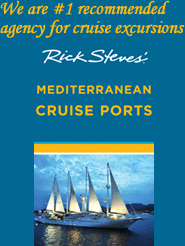










 The Basilica Cistern is one of many cisterns in Istanbul built during the Byzantine era to give life to this grand city. Istanbul is built on two big peninsulas on two continents, Asia and Europe. Neither side of the city has any natural source of water. Therefore, the cisterns and the aqueducts were the vital buildings of the city at all ages. In the 5th, 6th Century BC, for the Christians of Constantinople, the pagan temples of the city were nothing more than architectural material for recycling for new constructions. The Basilica cistern, which was built in 532 A.D, is perfect example of this mentality. When you walk down to the Basilica cistern, which is now under one of the busiest streets of Istanbul, you can see the breath taking pillars of former temples creating a mystical ambiance.
The Basilica Cistern is one of many cisterns in Istanbul built during the Byzantine era to give life to this grand city. Istanbul is built on two big peninsulas on two continents, Asia and Europe. Neither side of the city has any natural source of water. Therefore, the cisterns and the aqueducts were the vital buildings of the city at all ages. In the 5th, 6th Century BC, for the Christians of Constantinople, the pagan temples of the city were nothing more than architectural material for recycling for new constructions. The Basilica cistern, which was built in 532 A.D, is perfect example of this mentality. When you walk down to the Basilica cistern, which is now under one of the busiest streets of Istanbul, you can see the breath taking pillars of former temples creating a mystical ambiance. The Blue Mosque was completed in 7 years (1609 – 1616) The 24000 blue tiles of this mosque had impressed the Europeans of the 17th Century so much that the mosque is called “ The Blue Mosque’’. The building is a marvel of engineering with its half and quarter domes supporting its huge dome.
The Blue Mosque was completed in 7 years (1609 – 1616) The 24000 blue tiles of this mosque had impressed the Europeans of the 17th Century so much that the mosque is called “ The Blue Mosque’’. The building is a marvel of engineering with its half and quarter domes supporting its huge dome.  When Constantinople became the capital of the Roman Empire, The Byzantine, trying to compete with the grandeur of the city of Rome, built this Hippodrome three times larger than the biggest stadium of Rome. The Hippodrome had a sitting capacity of one hundred thousand people. The obelisks lined up in the middle of this building were brought from Egypt and Greece representing the lands, which were under the rule of Constantinople. The hippodrome was used for more than sports activities. The heart of the political life was beating here both during the Roman, the Byzantine and the Ottoman era.
When Constantinople became the capital of the Roman Empire, The Byzantine, trying to compete with the grandeur of the city of Rome, built this Hippodrome three times larger than the biggest stadium of Rome. The Hippodrome had a sitting capacity of one hundred thousand people. The obelisks lined up in the middle of this building were brought from Egypt and Greece representing the lands, which were under the rule of Constantinople. The hippodrome was used for more than sports activities. The heart of the political life was beating here both during the Roman, the Byzantine and the Ottoman era. Aya Sophia is a 1500-year old building, which stands as a witness to the history of Constantinople and Christianity. The size of its dome remained to be the highest for one thousand years until the dome of St. Paul’s Cathedral was built in the 16th Century.
Aya Sophia is a 1500-year old building, which stands as a witness to the history of Constantinople and Christianity. The size of its dome remained to be the highest for one thousand years until the dome of St. Paul’s Cathedral was built in the 16th Century. Was the first palace of the Ottomans built in Istanbul in late 1400s. The palace is a complex made up of four main courtyards and many smaller buildings. At the height of its existence as a royal residence, the palace was home to as many as 4,000 people, formerly covering a larger area with a long shoreline. The complex has been expanded over the centuries, with many renovations such as after the 1509 earthquake and 1665 fire. It now used as a museum to displays the treasury of the Ottomans. Built in 4 cout yards, the palace also gives a good idea of the ottoman architecture of the pre European architectural influence
Was the first palace of the Ottomans built in Istanbul in late 1400s. The palace is a complex made up of four main courtyards and many smaller buildings. At the height of its existence as a royal residence, the palace was home to as many as 4,000 people, formerly covering a larger area with a long shoreline. The complex has been expanded over the centuries, with many renovations such as after the 1509 earthquake and 1665 fire. It now used as a museum to displays the treasury of the Ottomans. Built in 4 cout yards, the palace also gives a good idea of the ottoman architecture of the pre European architectural influence
 The Grand Bazaar is a 15th century trade center where the products of the Silk Road found merchants from all over the world. The arched narrow streets of the Grand Bazaar still offer the riches of Anatolia and of Central Asia. The hectic, chaotic nature of the Grand Bazaar is not necessarily an ideal place to shop, but it certainly is a place to see. Over the centuries, the merchants of Istanbul had built trade and craft centers around the Grand Bazaar. They are called the HANS. Today the trade and production of art work takes place in these HANS which is of course less crowded with tourists and are ideal locations for shopping. Some of the hans are built on the foundations of the buildings dating from the Byzantine Era, 5-6th centuries of our era. If you have time, seeing these
The Grand Bazaar is a 15th century trade center where the products of the Silk Road found merchants from all over the world. The arched narrow streets of the Grand Bazaar still offer the riches of Anatolia and of Central Asia. The hectic, chaotic nature of the Grand Bazaar is not necessarily an ideal place to shop, but it certainly is a place to see. Over the centuries, the merchants of Istanbul had built trade and craft centers around the Grand Bazaar. They are called the HANS. Today the trade and production of art work takes place in these HANS which is of course less crowded with tourists and are ideal locations for shopping. Some of the hans are built on the foundations of the buildings dating from the Byzantine Era, 5-6th centuries of our era. If you have time, seeing these 
 Orta Koy is where the young and old of Istanbul congregate. It is somewhat like the Greenwich Village of New York. Artists open up their little stands for oil painting, jewelry making etc.
Orta Koy is where the young and old of Istanbul congregate. It is somewhat like the Greenwich Village of New York. Artists open up their little stands for oil painting, jewelry making etc. try. Ortakoy also has wonderful ice cream stands. The nicest part of it hardly any tourist come this far to this little neighborhood of Istanbul
try. Ortakoy also has wonderful ice cream stands. The nicest part of it hardly any tourist come this far to this little neighborhood of Istanbul Monastery of the Virgin Mary It is believed that Virgin Mary was seen at this monastery 400 years ago. It is one of the oldest living churches of Istanbul
Monastery of the Virgin Mary It is believed that Virgin Mary was seen at this monastery 400 years ago. It is one of the oldest living churches of Istanbul The neighborhood is not touristy at all. For those who like to have a walking tour of Istanbul and photography, we can easily offer the walking tour of Balat. Balat is also famous with the neighborhood bakeries. We always make sure that our clients taste the specialties of this neighborhood.
The neighborhood is not touristy at all. For those who like to have a walking tour of Istanbul and photography, we can easily offer the walking tour of Balat. Balat is also famous with the neighborhood bakeries. We always make sure that our clients taste the specialties of this neighborhood. 